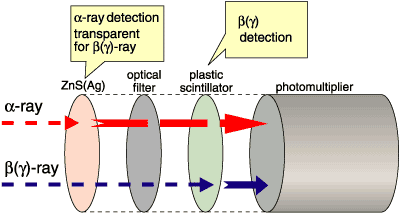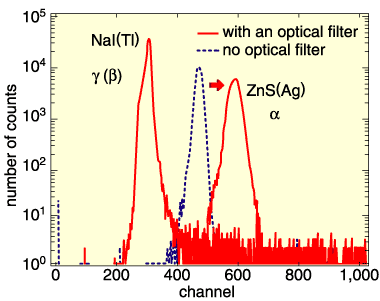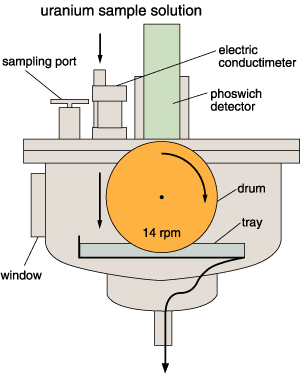The establishment of a technique of non-destructive realtime measurement of actinides and FP concentrations is an important issue for process management and enhancement of safety in the nuclear fuel-cycle backend. In order to measure alpha-rays of actinides together with other types of radiation simultaneously, various kinds of phoswich detectors have been developed.
There are several types of radiation and, therefore, various kinds of detector have been devised to detect them. Most of these detectors are sensitive to two or more different kinds of radiation, however it is quite difficult to measure each of them separately with sufficient accuracy.
In JAERI, complex (phoswich) detectors consisting of various scintillators as shown in Fig. 11-4, have been developed to accurately determine the intensity of the respective radiation in a combination of alpha-rays and other types of radiation such as beta-rays, gamma-rays, or neutrons. Here, the respective radiation is distinguished by means of the differences in their time spectra as shown in Fig. 11-5. The separation between them is further improved due to an increase in the delay of the a signals achieved by inserting appropriate optical filters behind the alpha detector.
A further advantage of the detector systems is the capability to detect alpha-rays from a solution. This enables us to introduce flow-monitoring of actinides solutions as shown in Fig.11-6. It is expected that remote monitoring using a device containing an optical fiber will be realized in the future. This opens up a number of opportunities, and as such, has attracted a lot of interest in this work. |


